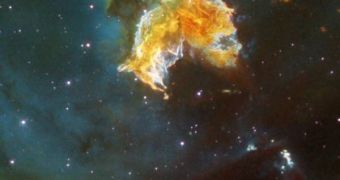It's final! Astronomers are now able to say for sure that red supergiant stars indeed create type II supernovas, a hypothesis that has been around for a while, but for which there have been no direct pieces of evidence until now. This type of supernovas is prompted by the collapse of impressive stars, several hundred times larger than our own Sun. That's why they are also known as core-collapse supernovas, and they look like impressive cosmic explosions.
The team of astronomers that has made the find has used a very simple method to test its theory. As previous studies have evidenced that red supergiants are the most probable sources of type II supernovas, the scientists have applied a “backtracking” method, in that they have started analyzing “before and after” pictures of several regions of space, where this type of supernovas occurred over the last years. It's known that in our galaxy, and in other of roughly the same size, a supernova appears approximately once every 50 years.
Astronomer Justyn Maund, both at the University of Copenhagen in Denmark and the University of California in Santa Cruz (UCSC), has been the leader of the team that has focused its efforts on two supernovas, known as SN 2003gd and SN 1993J. They were looking for signs that the formations appeared in the same regions of space as previous red supergiants. The investigations have sought to prove that once the red stars disappeared, they have been replaced by the supernovas, as direct observations have been impossible.
The team has used data from the Hubble Space Telescope, as well as from the Gemini Observatory, in order to establish the faith of the two celestial bodies. They have learned that the red supergiants that adorned that specific portion of the sky have disappeared completely, and that their exact positions are now occupied by the supernovas, which have left no doubt as to their origins. Maund says that the red stars are classified as the “progenitors” of the supernovas.
Research in this field is very cumbersome, because even if astronomers observe the explosion of a star into a supernova directly, they still have to wait for several years before the light of the event dies out in order to get the “after picture.” This means that long-term studies need to be initiated at the earliest time, to observe as many old red supergiants as possible.

 14 DAY TRIAL //
14 DAY TRIAL //